north pole
 The ends of the earth…basically the poles…not exactly the most inviting places to visit…much less to cross alone. Still, there are always people who set lofty goals for themselves, despite grave personal risk and hardship. One such man, Børge Ousland, who was born on May 31, 1962, is such a man. Ousland is a Norwegian polar explorer, photographer, and writer, who became the first person in the world to do a solo crossing of the Antarctic. And, that wasn’t his only great accomplishment. On May 4, 1990, Ousland and Erling Kagge became the first explorers ever to reach the North Pole unsupported That trip took them on a 58-day ski trek from Ellesmere Island in Canada, a distance of just over 497 miles.
The ends of the earth…basically the poles…not exactly the most inviting places to visit…much less to cross alone. Still, there are always people who set lofty goals for themselves, despite grave personal risk and hardship. One such man, Børge Ousland, who was born on May 31, 1962, is such a man. Ousland is a Norwegian polar explorer, photographer, and writer, who became the first person in the world to do a solo crossing of the Antarctic. And, that wasn’t his only great accomplishment. On May 4, 1990, Ousland and Erling Kagge became the first explorers ever to reach the North Pole unsupported That trip took them on a 58-day ski trek from Ellesmere Island in Canada, a distance of just over 497 miles.
No stranger to hard work, Ousland started his career as a Norwegian Navy Special Forces Officer with Marinejegerkommandoen. Then, he spent several years working as a deep sea diver for the oil industry in the North Sea. I guess that time would have prepared him for the conditions the men would face in a trek to the North Pole. They trip must have sparked something in Ousland, because in 1994, he made the 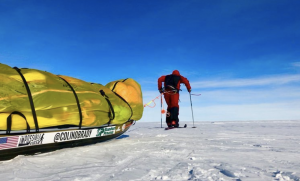 first solo and unsupported journey to the North Pole from Cape Arktichevsky in Russia. Most of us wouldn’t even go once, much less multiple times.
first solo and unsupported journey to the North Pole from Cape Arktichevsky in Russia. Most of us wouldn’t even go once, much less multiple times.
For Ousland, even that wasn’t enough. Between November 15, 1996 and January 17, 1997, Ousland became the first in the world to do an unsupported solo crossing of the Antarctic. In that trip, Ousland traveled 1,864 miles from the edge of the Ronne Ice Shelf to the edge of the Ross Ice Shelf…completely alone. Ousland skied the long journey, with kite assistance. He holds the record for the fastest unsupported journey to the South Pole…taking just 34 days.
On January 22, 2006, together with Mike Horn he began a journey to the North Pole in full Arctic night. The trip was successfully concluded on March 23, 2006. Then, in September 2010, Ousland’s team aboard “The Northern Passage” completed the circumnavigation of the North Pole. A Russian team aboard the “Peter I” achieved the same feat in that season. These were the first recorded instances of the circumnavigation of the 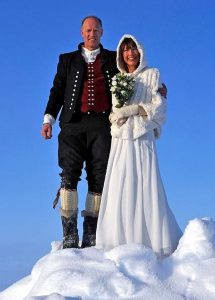 North Pole without an icebreaker. In December 2011, Ousland traversed Antarctica to the South Pole for the centennial celebration of the first expedition to reach the Pole.
North Pole without an icebreaker. In December 2011, Ousland traversed Antarctica to the South Pole for the centennial celebration of the first expedition to reach the Pole.
Ousland loved the “ends of the earth” so much that the next logical step was to be married at the North Pole, which he did in 2012. He and Hege Rogeberg tied the knot at the Geographic North Pole, having been flown in by helicopter with “20 or 30 people” to celebrate with them. The wedding was held according to Lutheran wedding custom, with a pastor, candles, and a cross made of skies. Børge was dressed in national Norwegian dress. The bride, Hege was dressed in a warm, long, white dress. The couple flew in from Longyearbyen, Svalbard to Barneo Ice Station where they boarded the Russian MI-8 helicopter to the North Pole. The proceedings lasted 30 minutes. After the ceremony champagne was served together with a colorful fireworks display. The adventurer and his wife now have three daughters…Max, Eva-Liv, and Ingebjorg.
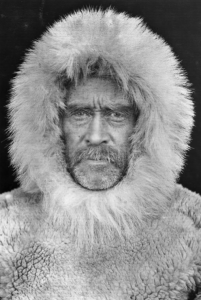
 When I think of the world’s explorers, I think back to the 1500s to maybe the 1700s, but there are still explorers, and probably places that no man has ever been, and some explorations are still going on. That is most likely because some places are very difficult to reach. American explorer Robert Peary knew that all too well. Peary had a dream. He wanted to go to the North Pole. For many years one thing or another came between Peary and his dream, but finally on April 6, 1909, Peary and his assistant Matthew Henson, and four Eskimos reached what they determined to be the North Pole. I can only imagine how elated they felt. It was the journey of a lifetime for them.
When I think of the world’s explorers, I think back to the 1500s to maybe the 1700s, but there are still explorers, and probably places that no man has ever been, and some explorations are still going on. That is most likely because some places are very difficult to reach. American explorer Robert Peary knew that all too well. Peary had a dream. He wanted to go to the North Pole. For many years one thing or another came between Peary and his dream, but finally on April 6, 1909, Peary and his assistant Matthew Henson, and four Eskimos reached what they determined to be the North Pole. I can only imagine how elated they felt. It was the journey of a lifetime for them.
Peary, a US Navy civil engineer, made his first trip to the interior of Greenland in 1886. In 1891, Henson, a young African-American sailor, joined him on his second arctic expedition. Their team made an extended dogsled journey to the northeast of Greenland and explored what became known as “Peary Land.” Then, in 1893, they began working toward reaching the North Pole. In 1906, during their second attempt, they nearly reached latitude 88 degrees north, just 150 miles short of their objective. It would seem that they had the fever, because in 1908, they traveled to Ellesmere Island by ship and in 1909 raced across hundreds of miles of ice to reach what they calculated as latitude 90 degrees north on April 6, 1909. Although their achievement was widely acclaimed, Dr. Frederick A. Cook challenged their distinction of being the first to reach the North Pole. Cook, a former associate of Peary, claimed he had already reached the pole by dogsled the previous year. A major controversy followed, and in 1911 the US Congress formally recognized Peary’s claim over Cook’s.
Sadly, decades after Peary’s death, navigational errors in his travel log surfaced, placing the expedition in all probability a few miles short of its goal. I am glad he never knew. In recent years, further studies of the conflicting claims suggest that neither expedition reached the exact North Pole, but that Peary and Henson came far closer, falling perhaps just 30 miles short. On May 3, 1952, US Lieutenant Colonel Joseph O. Fletcher 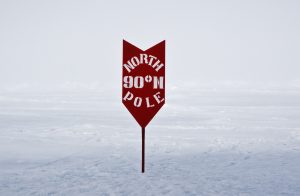
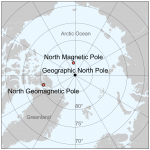 of Oklahoma stepped out of a plane and walked to the precise location of the North Pole, the first person to undisputedly do so. While he did step on the exact location, as confirmed by GPS or whatever measurement they used to confirm the location, it is my opinion that the accomplishment of Lieutenant Colonel Fletcher was nowhere near as amazing as that of Robert Peary and his team, who forged their way to the site, rather than being dropped on it.
of Oklahoma stepped out of a plane and walked to the precise location of the North Pole, the first person to undisputedly do so. While he did step on the exact location, as confirmed by GPS or whatever measurement they used to confirm the location, it is my opinion that the accomplishment of Lieutenant Colonel Fletcher was nowhere near as amazing as that of Robert Peary and his team, who forged their way to the site, rather than being dropped on it.
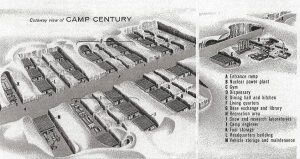 When I think about secrets, nothing very sinister comes to my mind, but when it comes to national or world secrets, maybe we should think a little differently. Of course, not every world or national secret is sinister, but some can be pretty odd. I don’t claim to be privy to any current national security secrets, but I’m finding out some from the past. There were some secrets that most people don’t know about, and some that almost seemed like science fiction. In 1959, the United States used to have a small underground city in the North Pole called Camp Century. It looked a lot like the rebel base on Hoth, which is the sixth planet in the remote system of the same name, and was the site of the Rebel Alliance’s Echo Base, as Star Wars fans would already know. Hoth is a world of snow and ice, surrounded by numerous moons, and home to deadly creatures like the Wampanoag…a cross between a polar bear and a Sasquatch, in looks anyway. Of course, that isn’t what Camp Century really was.
When I think about secrets, nothing very sinister comes to my mind, but when it comes to national or world secrets, maybe we should think a little differently. Of course, not every world or national secret is sinister, but some can be pretty odd. I don’t claim to be privy to any current national security secrets, but I’m finding out some from the past. There were some secrets that most people don’t know about, and some that almost seemed like science fiction. In 1959, the United States used to have a small underground city in the North Pole called Camp Century. It looked a lot like the rebel base on Hoth, which is the sixth planet in the remote system of the same name, and was the site of the Rebel Alliance’s Echo Base, as Star Wars fans would already know. Hoth is a world of snow and ice, surrounded by numerous moons, and home to deadly creatures like the Wampanoag…a cross between a polar bear and a Sasquatch, in looks anyway. Of course, that isn’t what Camp Century really was.
When Camp Century began its life, it was as a scientific outpost located hundreds of feet beneath a Greenland iceberg. From the surface, it looked like nothing more than an ominous snow-covered pyramid. But below, it was gigantic. The base was powered by an underground nuclear reactor, and at one point, is said to have housed a staff of 200. It was a self-contained city, complete with a gym, a chapel, a library, hobby shops and  even a movie theater. I wonder what kinds of movies they watched…movies about the outside world, and in summer no doubt. The plan was for scientific experiments to be conducted there, but as sometimes happens, the military decided it could be better used as a base for their own experiments…namely blowing things up. I suppose they assumed that there was little chance of anyone getting hurt, because of the remoteness of the base. The best kept secrets exist here, and I don’t think I have a big problem with that. So, to recap: The United States had a 200-person nuclear-powered outpost located beneath the ice of the North Pole, where one of their primary objectives was to drill as deep into the unforgiving, ancient ice as possible. Now, that sounds scary.
even a movie theater. I wonder what kinds of movies they watched…movies about the outside world, and in summer no doubt. The plan was for scientific experiments to be conducted there, but as sometimes happens, the military decided it could be better used as a base for their own experiments…namely blowing things up. I suppose they assumed that there was little chance of anyone getting hurt, because of the remoteness of the base. The best kept secrets exist here, and I don’t think I have a big problem with that. So, to recap: The United States had a 200-person nuclear-powered outpost located beneath the ice of the North Pole, where one of their primary objectives was to drill as deep into the unforgiving, ancient ice as possible. Now, that sounds scary.
The military took over in about 1960 and converted Camp Century into a giant ice-bound missile silo. Called Project Iceworm, the goal was to store approximately 600 nuclear missiles in the base, giving the United States a nice, secret little nuclear facility right next to Soviet Russia. Luckily for Russia, technical problems led to the whole mission being scrapped, because maintaining the tunnels was a constant chore. Every month, 120 tons of ice had to be removed to maintain the tunnels. The whole site collapsed within the that decade. Apparently, they worked harder at keeping the tunnels cleared, than at any experiment, or missile setup that they did.
The unites States Department of Defense told the Danish government that the “official purpose” of Camp Century was to test various construction techniques under Arctic conditions, explore practical problems with a semi-mobile nuclear reactor, as well as supporting scientific experiments on the  icecap. The process involved cutting a total of 21 trenches and covering them with arched roofs, within which prefabricated buildings were erected. With a total length of 1.9 mi, these tunnels contained a basically a small town, the total population of which was around 200. From 1960 until 1963 the electricity supply was provided by means of the world’s first mobile/portable nuclear reactor, designated PM-2A and designed by Alco for the United States Army. Water was supplied by melting glaciers and tested to determine whether germs such as the plague were present. Once it was cleared, they were able to use it. Nevertheless, fraught with trouble from the start, it proved a better idea to close it down.
icecap. The process involved cutting a total of 21 trenches and covering them with arched roofs, within which prefabricated buildings were erected. With a total length of 1.9 mi, these tunnels contained a basically a small town, the total population of which was around 200. From 1960 until 1963 the electricity supply was provided by means of the world’s first mobile/portable nuclear reactor, designated PM-2A and designed by Alco for the United States Army. Water was supplied by melting glaciers and tested to determine whether germs such as the plague were present. Once it was cleared, they were able to use it. Nevertheless, fraught with trouble from the start, it proved a better idea to close it down.

